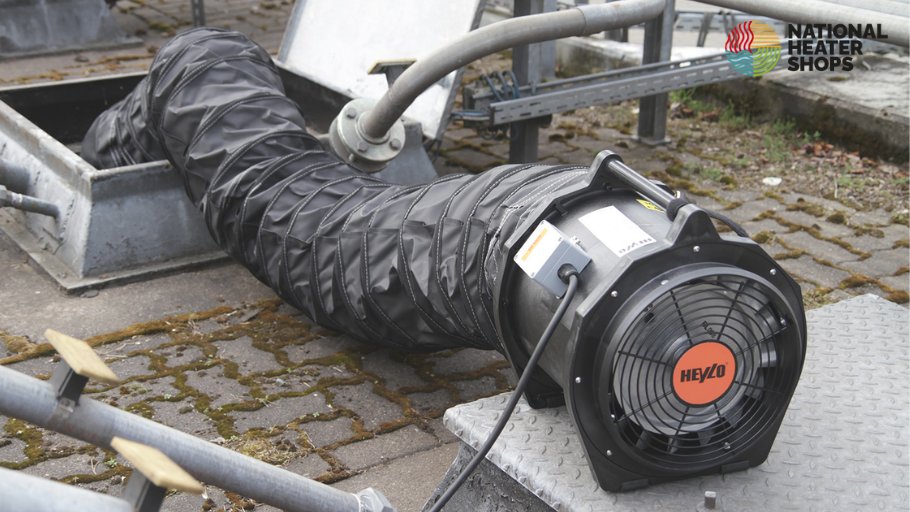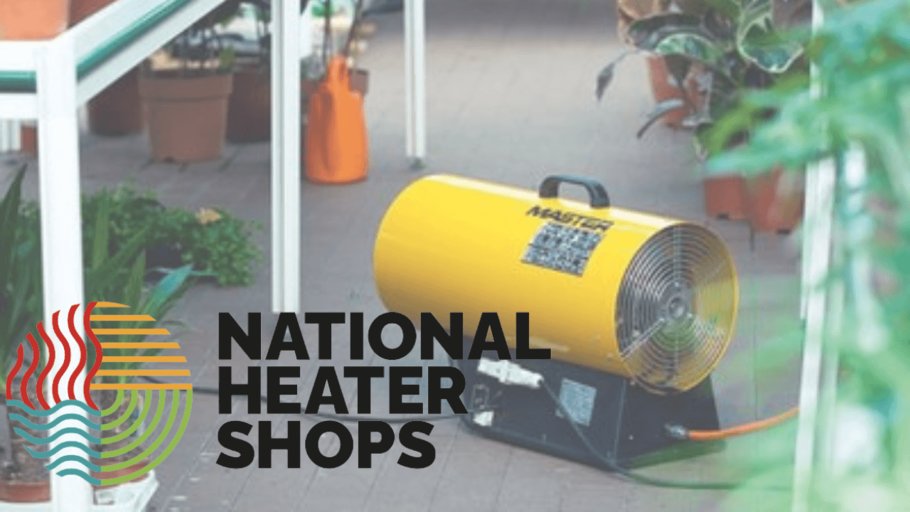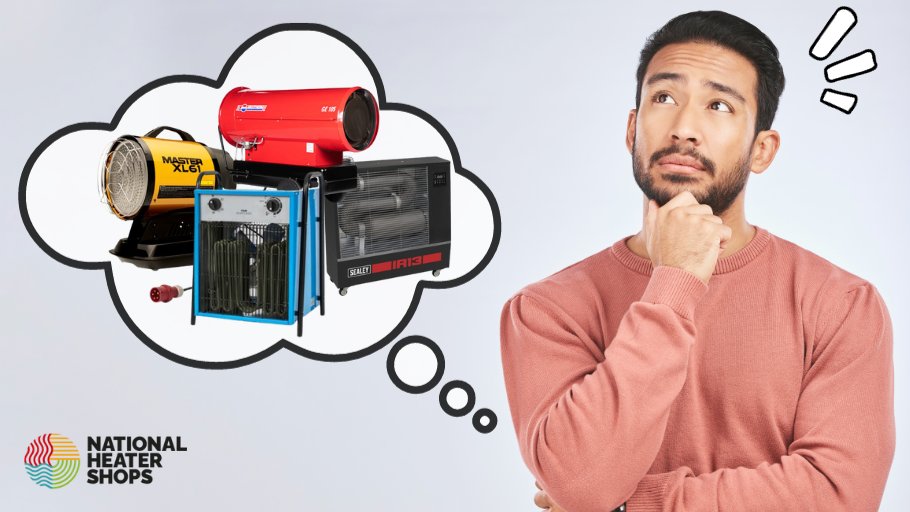Using professional blowers in industrial and commercial settings is of paramount importance when it comes to the removal of dust and airborne particles from industrial work sites. These blowers are designed to provide high air flow rates and can effectively remove large volumes of dust and debris from the air. They also help to improve indoor air quality, which is crucial for the health and safety of workers in these environments.
Without a proper blower, the air quality in industrial settings can quickly deteriorate, leading to respiratory problems and other health issues. Excessive dust and debris can also damage machinery and equipment, resulting in costly repairs and downtime.
Therefore, investing in the right, high-quality blower is essential for maintaining a safe and productive workplace. Here is everything that you need to know before purchasing a blower.
How to choose the right blower
When it comes to picking the best blower, you may want to consider the size and layout of your facility, the type of materials being moved, and the noise level of the blower. It is also important to choose a blower that is energy-efficient to save on operating costs in the long run.
Always read the user manual of a professional blower or ventilator before using it. Make sure you are familiar with its features, settings and safety precautions. Check if you have the appropriate power supply, cords and extension cables.
Here are some suggestions on how to choose the ideal blower for dusty areas and professional ventilation.
Consider where you will use the blower
The size of the work area and the type of ventilation required should be taken into consideration when selecting a blower. For larger areas, a high-capacity blower with a larger motor and fan blade will be necessary. On the other hand, smaller areas may only require a compact blower with a lower airflow rating. It is important to consider the specific needs of your workspace to ensure optimal performance and efficiency.
Airflow ratings can be displayed as m³/h (cubic metres per hour) in metric units or CFM (cubic feet per minute) in imperial units. A rule of thumb is that the airflow rating should be matched to the size of the room or area being ventilated. A margin of around 10% to 20% is often recommended to ensure sufficient air exchange in the room. Of course, other factors, such as the heat load and your existing ventilation system, should also be considered. You are always welcome to reach out to us for FREE professional advice from our team of experts.
Different types of blowers
There are different types of blowers and ventilators available on the market. It's important to consider any potential sources of pollutants or odours in the space, as these may require additional ventilation or filtration measures.
In addition, it is essential to consider noise levels and power consumption when selecting a blower for your workspace. A quieter blower may be necessary for areas where noise is a concern, while a more energy-efficient option can help reduce operating costs over time.
Axial Blowers
The axial type of blower is commonly used for low-pressure, high-volume applications, such as ventilation and cooling. It works by drawing air in parallel to the axis of rotation and pushing it outward. They are designed to move large volumes of air with low resistance, making them suitable for applications requiring good airflow circulation, such as cooling electronic equipment or ventilating confined spaces. They are ideal for cooling electronic equipment or ventilating confined spaces.
Centrifugal Blowers
If you need higher pressure or a more compact design, the centrifugal type may be a better choice. Also known as radial blowers, they direct the airflow in a perpendicular or radial direction to the fan's axis of rotation. The air is drawn in through the centre of the fan and pushed outward at a right angle to the inlet. They are more effective at generating airflow against resistance, such as in HVAC systems, industrial ventilation, or applications that require air to be pushed through ducts or filters.
ATEX-Certified Blowers
This type of professional blower is designed to be intrinsically safe, flameproof and explosionproof. They are built to be used in potentially explosive environments where explosive gases or dust may be present. We have curated a range of quality brands that manufacture top-rated ATEX blowers. Their products meet strict safety standards and ensure extra safety during operation in hazardous areas.
For instance, in the oil and gas and mining industries, a blower that prevents ignition or combustion of explosive gases or dust is of utmost significance. ATEX approved blowers usually come with explosion-proof housings and specialised motors. They are also electrically sealed and equipped with non-sparking blades to minimise the possibility of sparks or flames. Finally, there is usually a grounding wire to guarantee the secure discharge of any static electricity.
A guide to optimising blowers' efficiency
Apart from getting yourself familiar with the blower that you have chosen, we have some handy tips that might boost its performance and help you optimise its usage.
Correct positioning
To optimise air circulation, properly positioning the blower or ventilator is important. Make sure that the blower is placed in a central location and at an appropriate height to ensure that the air flow is evenly distributed throughout the room. Additionally, keep the blower away from any obstructions or walls to prevent any blockages that may hinder its efficiency.
Appropriate direction
In certain work environments, it might be essential to channel the airflow towards specific areas, such as dusty corners or locations where fumes are present. In such cases, it is important to ensure that the blower or ventilator is directed appropriately to achieve maximum effectiveness. Adjust the vents or tubes or position the unit accordingly to guide the airflow to the desired location.
Proper maintenance
Regular maintenance and cleaning of the unit are crucial to ensuring optimal performance and preventing any potential hazards. Make sure to clean the blower on a regular basis to prevent any buildup of debris or dust on cords and connections that could affect its performance. Don't forget to lubricate the motor as necessary. Lastly, always wear appropriate safety gear, such as goggles and gloves, when operating the blower to protect yourself from any potential hazards.
Necessary Accessories
Professional-grade blowers provide high volumes of fume sucking and fresh air blowing. In order to extend their reach to confined spaces or tight corners, flexible ductings always come in handy. They can be bent and adjusted to reach spaces with limited access, which allows for greater flexibility in channelling the airflow.
Directing the airflow through ductings can contain the spread of hazardous airborne particles, such as silica dust, within construction sites or production areas. They can be effortlessly localised and subsequently removed or expelled. This assists in upholding air quality and mitigating potential health risks for workers present in the area.
You can effectively remove dust and debris from an industrial site by swiftly adapting the blowing and sucking functions of a blower. A dust bag can also be attached to the blower to collect and dispose of the debris, further enhancing the efficiency of the cleaning process. HEYLO PowerVent 3000 and HEYLO PowerVent 6000, which both come with an M-Class dust bag, are two good examples.
Different applications of blowers
With their powerful airflow to effectively remove airborne particles from a work site, blowers and ventilators offer extensive flexibility across a diverse array of applications.
Heavy-Duty Applications
Blowers and ventilators create a huge flow of fresh air and extract the polluted air to create a safe working environment. They also quickly remove hazardous gases, smoke and fumes from flammable and explosive atmospheres. Therefore, industrial and ATEX certified blowers are very useful in roadworks, tunnels, fire scenes and even ATEX environments, such as construction and mining sites. With an effective blower, visibility and air quality can be improved and maintained, which is extremely important for workers' safety and health.
Industrial drying
The use of blowers speeds up building drying procedures by facilitating the rapid extraction of moist air from the targeted area. It is also handy when it comes to restoration after water damage, including floods and leaks. Blowers and ventilators are also very popular for garages and automotive dealerships, as they are frequently employed to accelerate the drying process after painting and finishing tasks. Therefore, a proper blower can significantly minimise the downtime of a business.
Maintaining hygiene and safety
Blowers also play a vital role in food production and storage facilities. Not only do they extract smoke and odours from kitchen areas, but they also remove excess moisture that might facilitate the growth of bacteria, consequently causing spoilage and contamination. As part of HVAC systems, it also improves air circulation and helps control the room temperature to ensure goods and products remain intact and of high quality. Therefore, they are particularly useful in bakeries, kitchens, production halls and storage rooms.
Conclusion
Choosing the right professional blower and using it correctly can make a huge difference in an industrial working environment. At National Heater Shops, we have carefully selected a variety of top-quality brands. Ranging from industrial air movers to industrial dust extractors, our selection caters to different industrial needs. Investing in a reliable and efficient blower can improve air quality, increase productivity, and create a safer working environment for employees.





